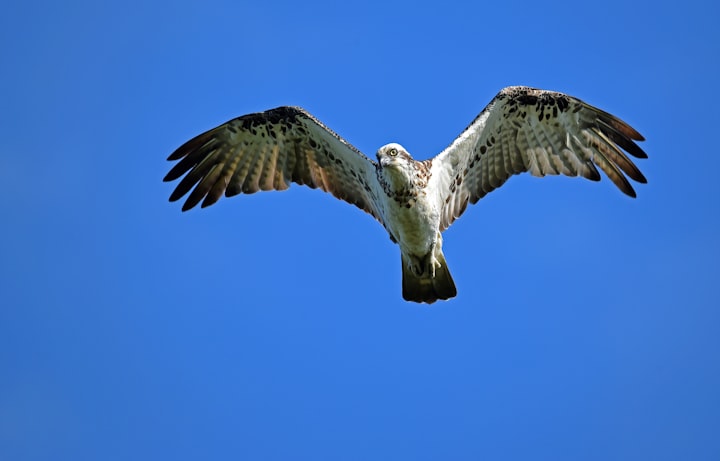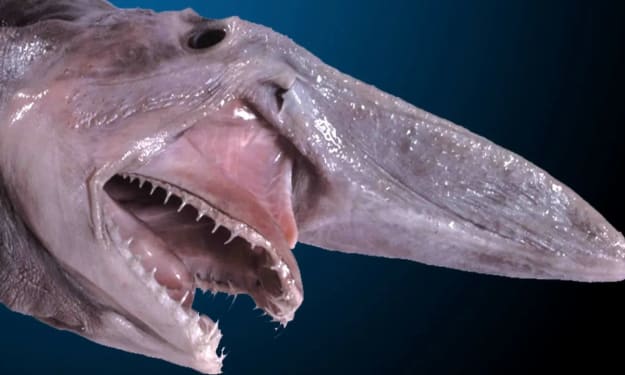The History of Flying - Part One of Three
The Natural World of Flight

People have always had a fascination with flight. I know I am in awe when I see a bird catching a thermal updraft. Part one of this series begins with flying creatures that have or are inhabiting our planet.
Part two: Mythical Flying Creatures
Part three: Flying Creations
It is amazing how long there has been flight on our fair planet. Unless you want to include bacteria catching the wind, winged seeds were the first to achieve flight, between 360 and 370 million years ago, and they still exist. Maple trees have helicopter seed pods. Some pine and jacaranda trees have papery, winged seeds, allowing them to fly far from the parent tree. Is it really flight if it's a one-time glide, with no control over speed or direction? Debatable, but included for the sake of comprehensiveness.
Insects appeared not too much later by evolutionary standards, around 350 million years ago. They have been astonishing and terrorizing humans since our arrive on the planet a mere 200,000 to 300,000 years ago. The oldest fossils of flying insects are dragonflies, found in Scotland. They were much bigger than our current versions of dragonflies. The largest fossil of a dragonfly, found in France, had a wingspan of 30 inches, four times the size of the ones we see now.

The deadliest flying insects are mosquitoes, certain species of flies, and certain species of bees and hornets.
Here are some cool facts about flying insects:
1. Ladybugs can eat up to 5000 insects in their lifetime.
2. Bee’s wings beat up to 11,400 times a minute.
3. One dung beetle can drag 1,141 times its weight – that’s like a human pulling six double-decker buses. Also, they can fly up to 30 miles.
4. Large groups of fireflies sometimes flash in unison.
5. Butterflies taste with their feet. A Skipper butterfly can fly faster than a horse can run.
6. Dragonflies live up to four years as aquatic nymphs and only a few months as mature adults.
7. Mosquitoes are attracted to smelly feet.
Flying fish, called Thoracopterids, were the first vertebrate animals to fly, around 240 million years ago. However, these were most likely gliders rather than fliers. Still, it is interesting that fish managed flight twice in their evolution.

Pterosaurs came around about 230 million years ago. They have been found on every continent, including Antarctica. One strain, found in North America, had a wingspan up to 50 feet. Pterodactyls, with their shorter tails, came later. All these first flying vertebrates died out with the extinction event which claimed the dinosaurs.
Bats came around about 50 million years ago. They haven’t changed much, although some early ones had long tails and many teeth. There are now over 1000 species of bats. Interestingly, bat dung can be used to make gunpowder.

Arguably, the greatest, most well-known creature ever to attain flight are birds. Four distinct lineages of birds survived the Cretaceous–Paleogene extinction event 66 million years ago, giving rise to:
1. Ostriches and relatives (Paleognathae)
2. Ducks and relatives (Anseriformes)
3. Ground-living fowl (Galliformes)
4. "Modern birds" (Neoaves)
Bird species are currently going extinct at a far faster rate than the generation of new species. The disappearance of a population, subspecies, or species represents the permanent loss of a range of genes.

Birdwatching, or birding, is a very common pastime for people of all ages and skill levels. Some use the naked eye, while some use binoculars or telescopes. The Big Year, a movie based on true events, follows birders in North America, seeking to sight the greatest number of different bird species in a single year. The current record is 784.
The next time you watch a hummingbird flit around or see an eagle or hawk soar, take a moment to think how remarkable it is that we have such beautiful flying creatures to witness.
Please do what you can to protect their natural habitats by limiting waste, reducing, reusing, recycling, and planting trees.
Online Resources:
http://www.bbc.com/earth/story/20150218-flying-animals-you-never-heard-of
http://www.aerospaceweb.org/question/nature/q0201.shtml
https://en.wikipedia.org/wiki/Evolution_of_birds
https://earthnworld.com/deadliest-insects/
About the Creator
Julie Lacksonen
Julie has been a music teacher at a public school in Arizona since 1987. She enjoys writing, reading, walking, swimming, and spending time with family.







Comments
There are no comments for this story
Be the first to respond and start the conversation.